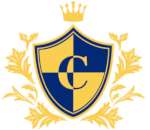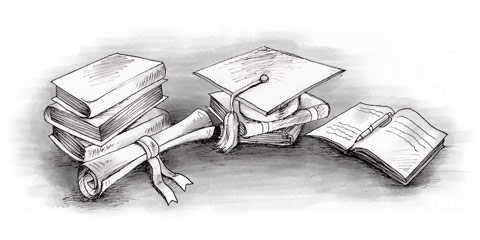Each child up to the age of 16 must attend the primary school which lasts eight years and is divided into a lower and an upper level. After the eight years of the primary school students must attend one of the secondary schools for at least 2 years (Középiskola).
After the reforms of 1989 Russian is no longer a compulsory language in schools and has tended to be replaced by English and German. The reforms have also expanded the rights of students and parents.
Nursery school
The kindergarten (óvoda) is the first stage of the Hungarian education system. Every child between three and six has the right to attend a nursery school. Attending the kindergarten from the age of five is compulsory. With a maximum of four hours a day, the children are supposed to be prepared for the demands of school.
Primary School (általános iskola)
Basic education in Hungary lasts usually eight (in some cases ten) years. The primary school is divided into a lower lever (class 1-4) and an upper level (class 4-8). After finishing the eighth grade students can choose whether they want to switch to a high school or to a vocational school. Until age 16 students must attend basic education.
School enrolment in Hungary
Free compulsory education is guaranteed by law. However, private schools may set a tuition fee. Schools are required to take all children who live in their area but parents can choose any school for their children.
To enter in the higher classes of high school, students must pass an examination. The standards for this examination are issued by the Ministry of Education.
Secondary School (gimnázium)
Until 1989 high school lasted only four years (from grade 9 to 12). Since then, there are high schools which teach students after the fourth grade of the primary school. The aim of visiting gimnázium after the fourth grade is to teach students more intensively and prepare them for the university. There are also bilingual schools, in which students speak a foreign language up to 20 hours per week.
The final secondary-school examination (érettségi vizsga) takes place in three compulsory subjects (Mathematics, Hungarian and History) and two electives (Foreign Languages, Chemistry, Physics, Geography, Biology, etc.). Approx. 70% of high school graduates are admitted to higher education institutions.
Vocational School (szakközépiskola)
In vocational schools students get a double qualification. After four years of school, students receive the Matura (which is a university entrance) and qualify as skilled workers.
Approximately one third of all primary school graduates choose a vocational school. To access the vocational school, students need to pass an exam.
An average week at a vocational school consists of 30 to 32 hours of classes per week. The course content includes approximately 50-60% general education, 20-30% professional theory and 20% working experience. Students complete work placements after the third and fourth grade.
There are three types of vocational school:
- Technician training school (for mechanics, energy, biomechanics, etc.)
- Skilled-worker training school (for industry, agriculture, etc.)
- Middle vocational education school (including transport, postal services, trade, catering, etc.)
Trade school (szakmunkásképzö iskola)
In trade schools students are trained to become skilled workers. They usually take three to four years and the theoretic content is very limited.
The professional schools can only take students for which they can provide a work placement. Either the school itself offers a work placement or it has concluded an agreement with a company that provides work placements for students. Students can also look for a work placement on their own.
The first year of theoretical and practical instruction takes place in the school environment. After that students can start their work placement. After a successful exam, graduates receive a certificate.
Vocational colleges (györs-és gépiróiskola/egészségügyi szakiskola)
These include, for example, the College of Health or the College of Stenography. In the College of Public Health students will be trained in three stages. After successful completion of the third school year, a certificate can be obtained for example as a nurse.
The school of stenography trains stenographers within two years. After these two years students can pass their final exams and receive their diploma.
Special school (speciális szakiskola)
Special schools provide tailored education for disabled and disadvantaged students of age 14 to 16. After two years of attending this school, students obtain a certificate confirming their graduation from the school.
Further education
There are many opportunities for adults to return to education and gain further qualifications. It is possible to complete the following qualifications:
- elementary school
- The Matura (for adults with elementary school graduation)
- The Matura (for adults who are already skilled professional workers)
- Graduation from professional school
- Technician qualification (one or two years of additional training)
There are various other institutions that provide government-recognized qualifications. You can choose between independent fee-based educational institutions and many other community colleges. You can also gain qualification to study at a Hungarian university.


